
Point of No Return is a 1993 American action film directed by John Badham and starring Bridget Fonda and Gabriel Byrne. It is a remake of Luc Besson's 1990 film La Femme Nikita.
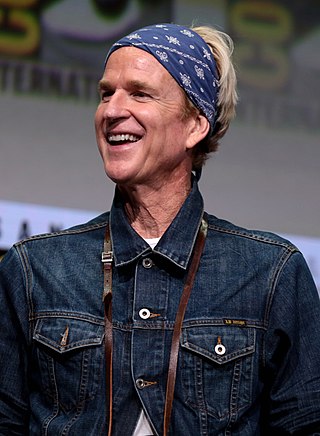
Matthew Avery Modine is an American actor. He rose to prominence through his role as U.S. Marine Private/Sergeant J.T. "Joker" Davis in Stanley Kubrick's Full Metal Jacket (1987). Other films include Birdy (1984), Vision Quest (1985), Married to the Mob (1988), Gross Anatomy (1989), Pacific Heights (1990), Short Cuts (1993), Cutthroat Island (1995), The Dark Knight Rises (2012), and Oppenheimer (2023). On television, he portrayed Dr. Don Francis in the HBO film And the Band Played On (1993), the oversexed Sullivan Groff on Weeds (2007), Ivan Turing in Proof (2015), and Dr. Martin Brenner in Netflix's Stranger Things (2016–2022).

Vision Quest is a 1985 American coming-of-age romantic drama film starring Matthew Modine, Linda Fiorentino, Michael Schoeffling and Ronny Cox. It is based on Terry Davis's 1979 novel of the same name. Modine plays a Spokane high school wrestler who falls in love with an older woman, an aspiring artist from New Jersey on her way to San Francisco.

Celebrity is a 1998 American comedy-drama film written and directed by Woody Allen, and features an ensemble cast. The screenplay describes the divergent paths a couple takes following their divorce.
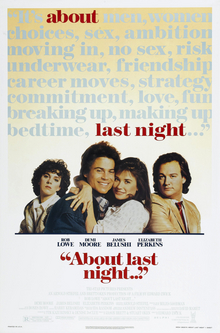
About Last Night is a 1986 American romantic comedy-drama film directed by Edward Zwick, and starring Rob Lowe and Demi Moore as Chicago yuppies Danny Martin and Debbie Sullivan, who enter a committed relationship for the first time. Along with featuring James Belushi as Danny's friend and colleague Bernie Litko, the film also marks the screen debuts of Elizabeth Perkins and Catherine Keener. The screenplay by Tim Kazurinsky and Denise DeClue is based on the 1974 David Mamet play Sexual Perversity in Chicago. The film was both critically and commercially successful, and was remade with a predominantly Black cast in 2014.

Elizabeth: The Golden Age is a 2007 biographical historical drama film directed by Shekhar Kapur and produced by Universal Pictures and Working Title Films. It stars Cate Blanchett in the title role and is a loose but fact-based portrayal of events during the latter part of the reign of Elizabeth I, forming a sequel to Kapur's 1998 film Elizabeth. The film co-stars Geoffrey Rush, Clive Owen, Jordi Mollà, Abbie Cornish, and Samantha Morton. The screenplay was written by William Nicholson and Michael Hirst, and the music score was composed by Craig Armstrong and A. R. Rahman. Guy Hendrix Dyas was the film's production designer and co-visual effects supervisor, and the costumes were created by Alexandra Byrne. The film was shot at Shepperton Studios and various locations around the United Kingdom.
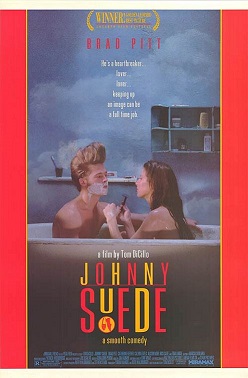
Johnny Suede is a 1991 American film, the directorial debut of Tom DiCillo, and stars Brad Pitt, Catherine Keener, Calvin Levels and Nick Cave.

Catherine Ann Keener is an American actress. She has portrayed disgruntled and melancholic yet sympathetic women in independent films, as well as supporting roles in studio films. She has been nominated twice for the Academy Award for Best Supporting Actress, for Being John Malkovich (1999) and for her portrayal of author Harper Lee in Capote (2005).
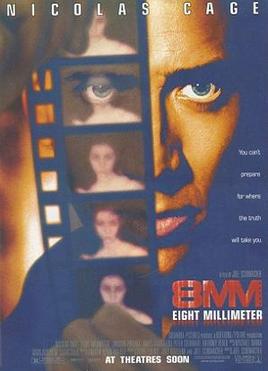
8mm is a 1999 American crime thriller film directed by Joel Schumacher and written by Andrew Kevin Walker. A German–American production, the film stars Nicolas Cage as a private investigator who delves into the world of snuff films. Joaquin Phoenix, James Gandolfini, Peter Stormare, and Anthony Heald appear in supporting roles.

Abel Ferrara is an American filmmaker, known for the provocative and often controversial content in his movies and his use and redefinition of neo-noir imagery. A long-time independent filmmaker, some of his best known movies include the New York-set, gritty crime thrillers The Driller Killer (1979), Ms .45 (1981), King of New York (1990), Bad Lieutenant (1992) and The Funeral (1996), chronicling violent crime in urban settings with spiritual overtones.

Intolerable Cruelty is a 2003 American romantic comedy film directed, co-written and edited by Joel and Ethan Coen, and produced by Brian Grazer and the Coens. The script was written by Robert Ramsey and Matthew Stone and Ethan and Joel Coen, with the latter writing the last draft of the screenplay. The film stars George Clooney, Catherine Zeta-Jones, Geoffrey Rush, Cedric the Entertainer, Edward Herrmann, Paul Adelstein, Richard Jenkins and Billy Bob Thornton. It premiered at the 60th Venice International Film Festival and was released in the United States on October 10, 2003.

Living in Oblivion is a 1995 American independent satirical black comedy film written and directed by Tom DiCillo, and starring Steve Buscemi, Catherine Keener, Dermot Mulroney, Danielle von Zerneck, James LeGros and Peter Dinklage in his film debut. The film won the Waldo Salt Screenwriting Award at the 1995 Sundance Film Festival for DiCillo. It received critical acclaim.
Thomas A. DiCillo is an American film director, screenwriter, cinematographer, and musician.
Mary Lorraine Ward, also known as Mary Ward Breheny, was an Australian actress of stage, television, and film and radio announcer. Her career spanned seven decades. Ward trained in England and Australia, and worked in both countries.

Box of Moonlight is a 1996 American comedy-drama film written and directed by Tom DiCillo, and starring John Turturro, Sam Rockwell, Lisa Blount and Catherine Keener.

Ryan's Hope is an American soap opera created by Claire Labine and Paul Avila Mayer, airing for 13 years on ABC from July 7, 1975, to January 13, 1989. It revolves around the trials and tribulations within a large Irish-American family in the Washington Heights neighborhood of Manhattan, New York City.
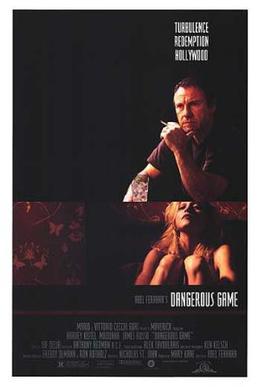
Dangerous Game is a 1993 drama film directed by Abel Ferrara, written by Nicholas St. John, and starring Madonna, Harvey Keitel, and James Russo.

Julie Olson Williams is a fictional character and member of the Horton family on the NBC daytime drama, Days of Our Lives, a long running serial about working class life in the fictional town of Salem.
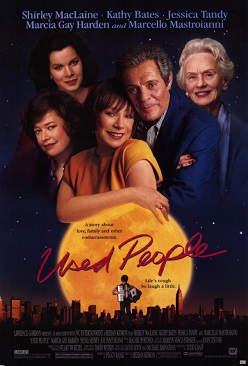
Used People is a 1992 romantic comedy film directed by Beeban Kidron. The film stars Shirley MacLaine, Marcello Mastroianni, Bob Dishy, Kathy Bates, Marcia Gay Harden, Jessica Tandy, Doris Roberts and Joe Pantoliano. The screenplay by Todd Graff, adapted from his 1988 off-Broadway play The Grandma Plays, takes a humorous look at a highly dysfunctional family living in the New York City borough of Queens circa 1969. It is an international co-production between Japan and the United States.

















